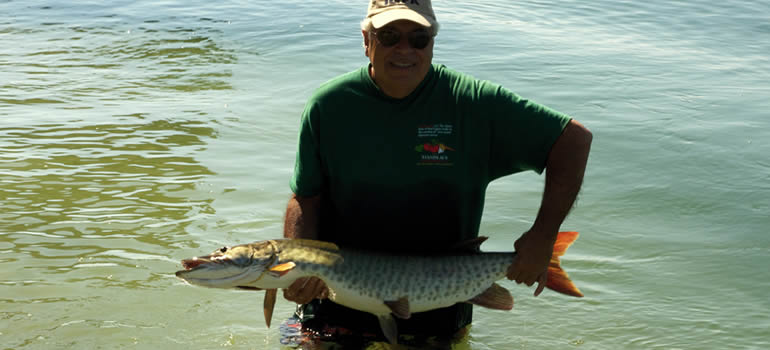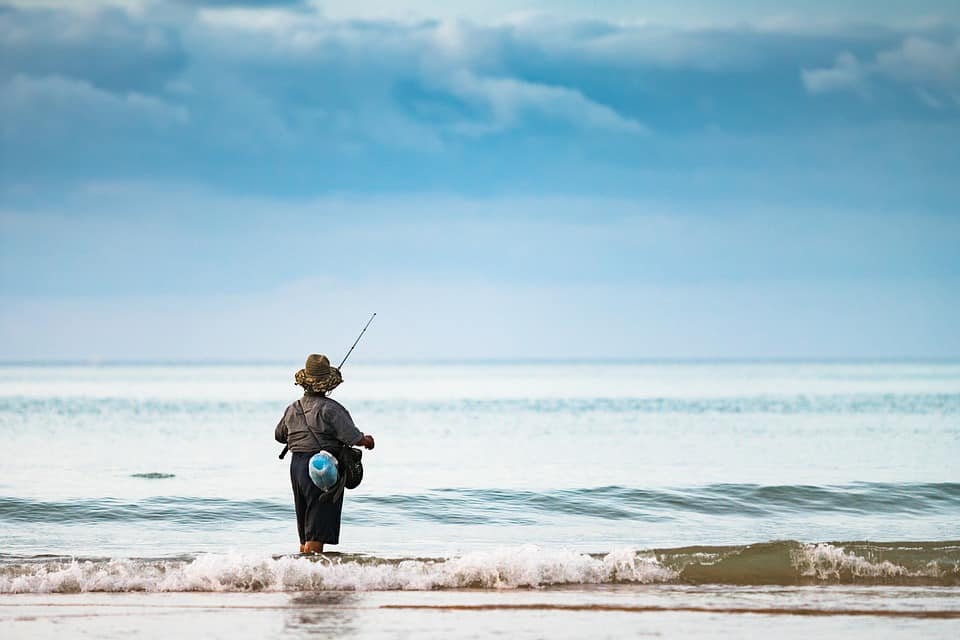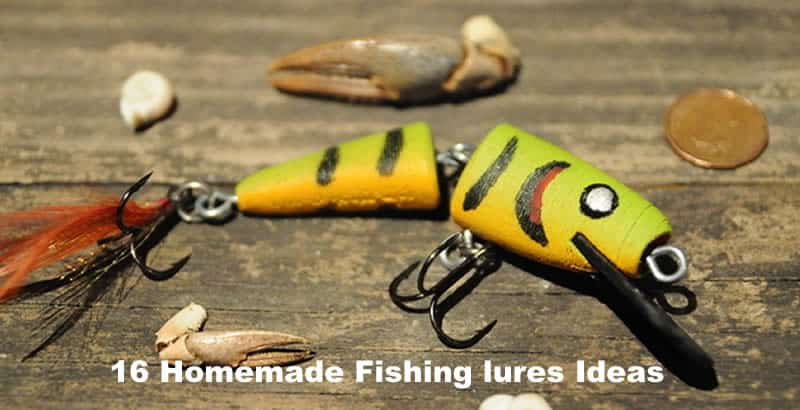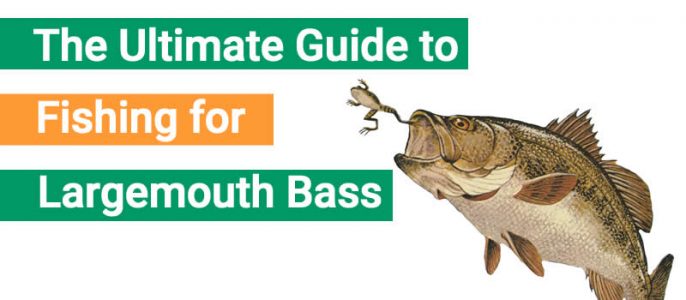If you buy via a link on this page, we may receive a commission, at no extra cost to you.Learn more

Catching a muskie fish is much work, so naturally, you may want to keep this fish and eat it. You may want to know if you can actually eat muskie fish. The idea of impressing your family with this giant freshwater fish sounds like a real fisherman’s dream, so the thought pops into your mind, you want to make this catch your dinner. So, can you eat muskie fish?
Can you eat muskie fish? You can eat muskie. However, there are many other factors that you should take into consideration when making your decision of whether or not you will consume that fish.
If this thought happens to cross your mind and you’d like to know exactly what you might be eating keep reading. You’ll also find some tips on how to catch one of these giants and what to do once you’ve reeled it in.
Why Do People Eat Muskie?
Let’s start with the obvious size. These freshwater monster fish can reach 48 inches long with an average weight of almost 40 pounds. One fish alone would feed a small family. The biggest muskie ever “reported” was eight feet long. But this wasn’t actually documented, so it may just be a fisherman’s tale.
Taste is, of course, another reason some might choose to eat this fish. But, because it’s not eaten often, it’s hard to find many accounts of what it actually tastes like. Some compare muskie to walleye, flavor-wise. Others say it’s closer to a cod-style. Naturally, however, you choose to cook the fish will enhance the flavor.
Why You Shouldn’t Eat Muskie
Keeping your muskie to eat comes at a price, for your own wallet. You’ll need a harvest permit, for starters. You’ll also have to meet minimum size requirements for keepers. Taking one without following the rules can result in fines. Most lakes also have a limit on how many muskie that you can actually choose from the water. These restrictions also help keep the fish population healthy and clean.
These fish also eat anything and everything. They’re predators and fairly ferocious. It’s not uncommon for them to consume ducks, rats, mice, and other small animals. This is just something to be mindful of when deciding whether or not you want to actually eat the state fish of Wisconsin.
Muskie is also susceptible to pollution because they have such large, thick bones. They typically have the most mercury out of any other freshwater fish. Check into this before deciding whether or not you want to put in all that work on cleaning the fish. Eating fish that live in polluted and unclean waters can make you very, very sick.
Some fisherman also reports that muskie fish have a very strong, unpleasant odor. They cite this as one of the main reasons they choose to not consume this fish. This would most certainly make it hard to keep one after you catch it, let alone spend time cleaning it.
How to Catch Muskie
Muskie is slippery “little” suckers, literally and figuratively. You’ll need to be at just the right place at the right time, with the right bait, of course. As mentioned previously, cold water is your best bet. Choose a freshwater source in one of our cooler states. They also prefer clearer water.
Talk to your local fishing experts to decide your odds of catching a muskie before you go all in. That will lessen the chances of going home empty-handed and disappointed. Your local anglers can also help you decide on what bait to use. Here are a few fan favorites…
- Musky Innovations BullDawg (Amazon)
- Musky Mania Jointed Believer (Amazon)
- Musky Double Cowgirl Bait (Amazon)
- Whopper Plopper (Amazon)
- Mepps Magnum Muskie (Amazon)
- Tackle Industries SuperD Muskie Bait (Amazon)
- Musky Mania Jake (Amazon)
- FishingGhost Swimbait Candy (Amazon)
When choosing your bait, consider the color of the water as well as the season. You’ll want to pick colors that contrast with the lake. If you’re fishing in a clear lake, a color that’s more subdued is your best bet. A murky lake calls for a more brightly colored lure. And here’s a little bonus… fishing lures come in fancy colors such as pumpkin and smoke.
Other Important Equipment
Rule number one of muskie fishing… remember to keep your hands in the boat. These guys have been known to actually jump out of the water and bite when they’re on the hunt for snacks. They’ve also rammed boats when fishing lures have been reeled back out of the water.
Due to their sheer size and temperament, it’s better to be over-prepared when venturing out to catch muskie. You’re basically setting out to catch a fish that’s the size of a small child. If you do happen to find one on your line, it’s best to have all of the necessary equipment at the ready. The less time you spend with Mr. Muskie, the better. One glimpse of those teeth and you’ll be ready to set it free.
Check out this list of a few things that you’ll more than likely need on your excursion. You may not end up needing all of them, but we all know the whole “better safe than sorry” rule…
- Fishing rod: 7-9’ heavy action rod that can handle a really hauling in a fish of this size.
- Reel: large-bait casting, built to work with the lures you’ll be using.
- Fishing Line: braided, heavyweight limit.
- Lures: see the list above and bring a few of your favorites, you’ll want a backup just in case a big one makes off with your Whopper Plopper.
- Bolt cutter
- Needle nose pliers
- Jaw spreader
- Barbless hooks: these are easier to remove, meaning you’ll be spending less time with your fingers in the mouth of this creature.
- Net: make sure you bring one that can help you hoist 30+ lbs. of fish.
- Gloves: you’ll especially want these if you’re planning on cleaning and eating your catch.
- Polarized sunglasses: these will cut down on the glare and reflections on the shiny lake water.
- And last but not least, of course, patience.
Cleaning and Eating Your Catch
If you do choose to go the dinner route, know that you’ve got much cleaning ahead of you. Your best tool for cleaning this kind of fish would be a filet knife. Cleaning muskie is similar to cleaning pike.
Start by removing the head and tail, then cutting along the backbone. You’ll also need to remove all the skin. There are quite a few bones to remove. Once you remove all of those, you will have a few edible pieces of fish. Check out How to Filet Muskie by Koaw Nature for a detailed tutorial.
Some swear by cooking these on the grill; others prefer them baked. Those that do eat muskie often seem to think that pan-frying is the most delicious preparation method. It’s even served boiled with a side of drawn butter.
However, most of that seasoned muskie fisherman agrees that this fish is rather bland and requires a lot of seasoning. Lemon pepper, garlic, and citrus are all common flavors in many muskie recipes. Here’s one that seems to be a fan favorite:
Pecan Crusted Muskie
Ingredients:
- musky fillets, 2 pounds, cut into serving-sized sections
- 1 cup pecans
- ¼ cup melted butter
- ¼ cup white wine
- 1 lemon, zested and juiced
- 1 small shallot, minced
- ¼ cup peanut oil
- salt and pepper
Directions
- Finely mince the pecans in a food processor or mince chop them with a knife. In a large bowl or platter, combine the pecans, shallot, butter, white wine, lemon zest and juice, and a dash of salt and pepper to taste, mix well.
- Roll the musky fillets in the pecan mixture, lightly pressing the combination to help work it to stick.
- Heat the peanut oil in a large skillet over medium-high heat. Add the fillets and cook for about 3-4 minutes on each side until golden brown, or until done.
- Serve with a butter dipping sauce or one of which you desire.
Muskie fishing is no doubt exciting. Reeling in one of those bad boys is what sport Fishermans’ dreams are made of! But if it’s the taste you’re after, just remember, there’s lots of other fish in the sea.




